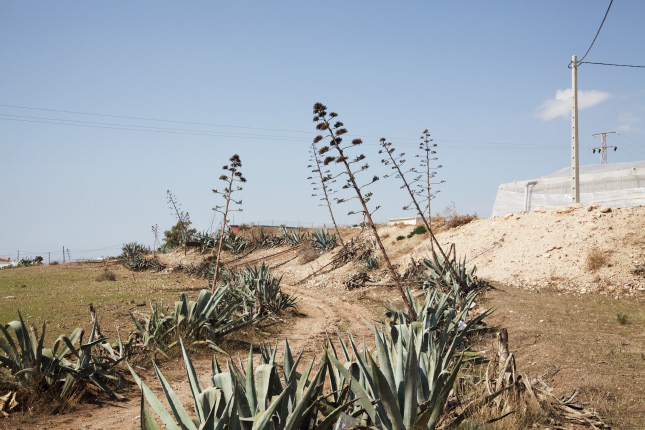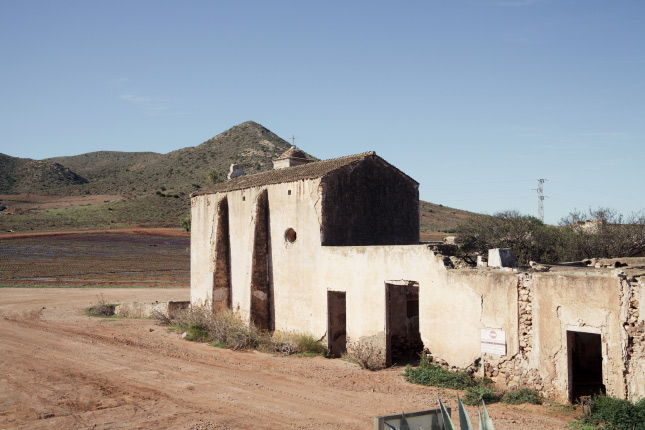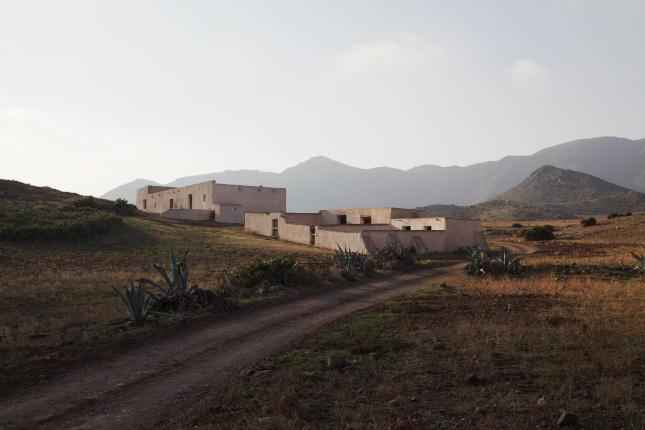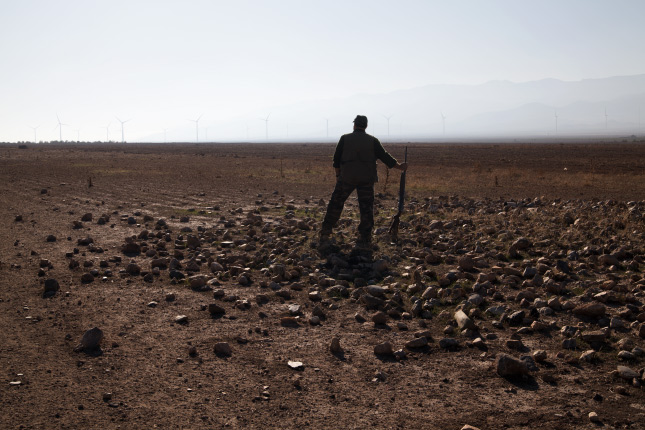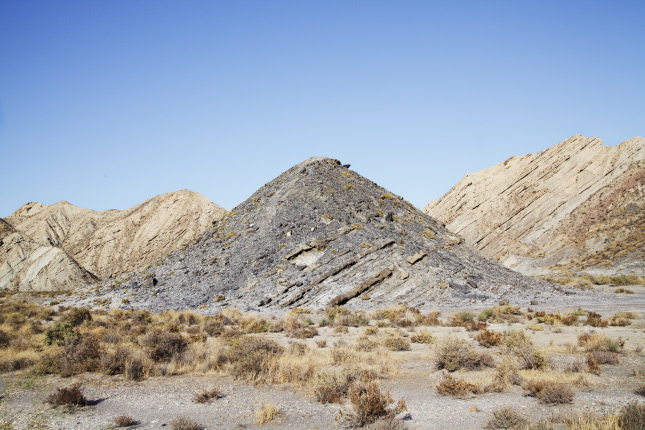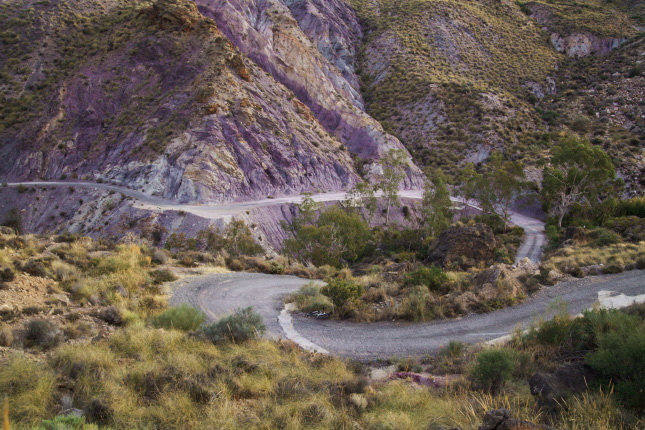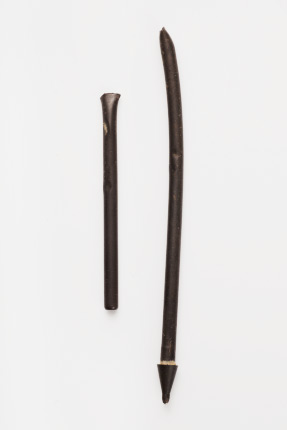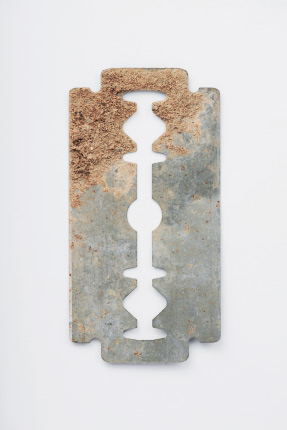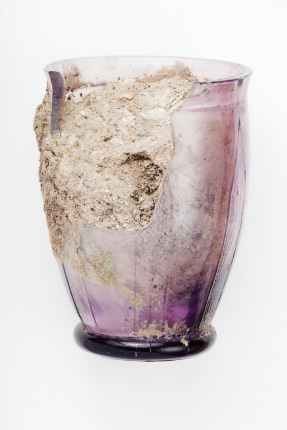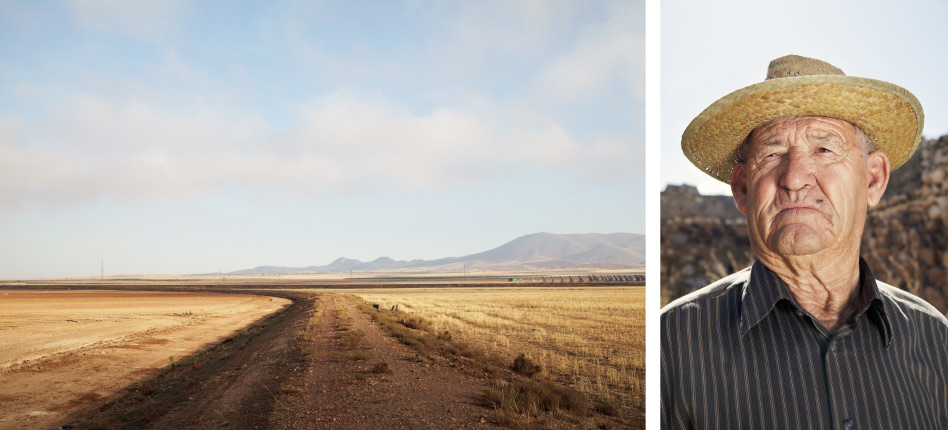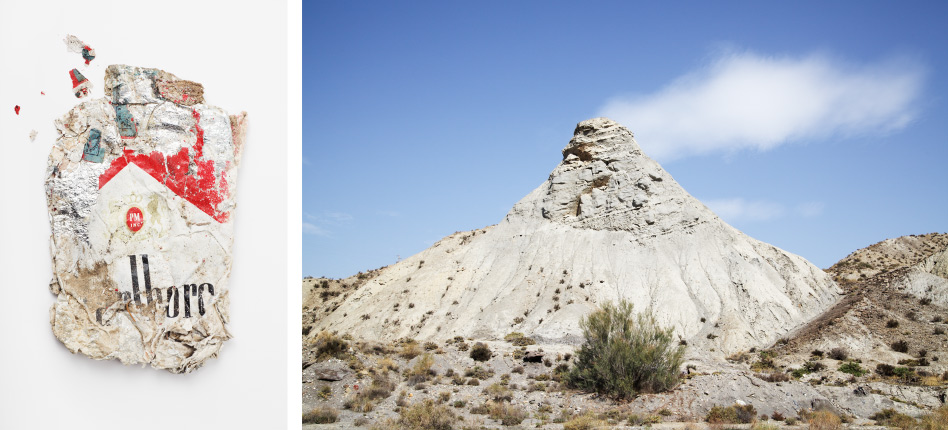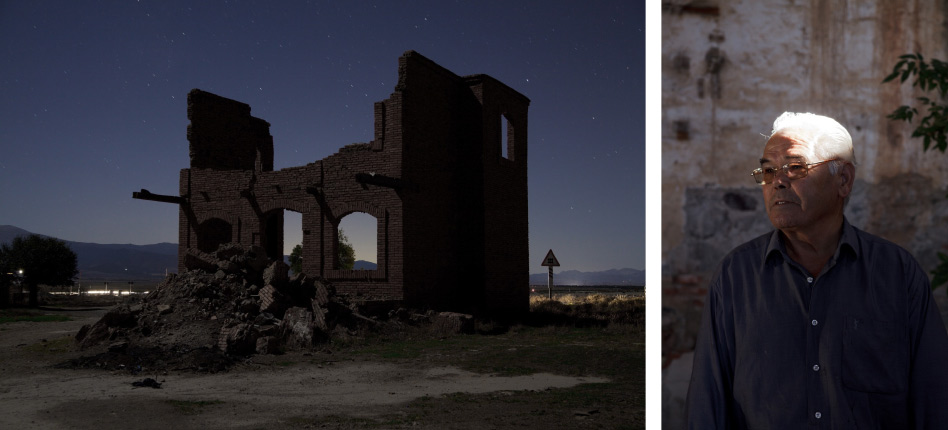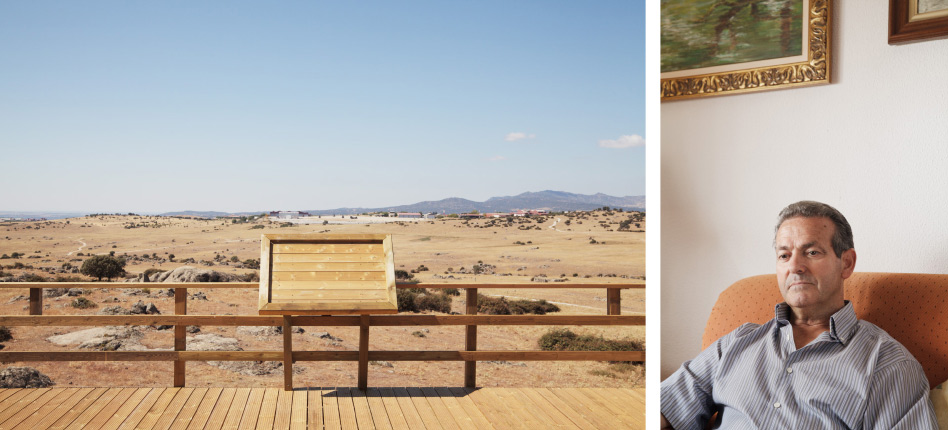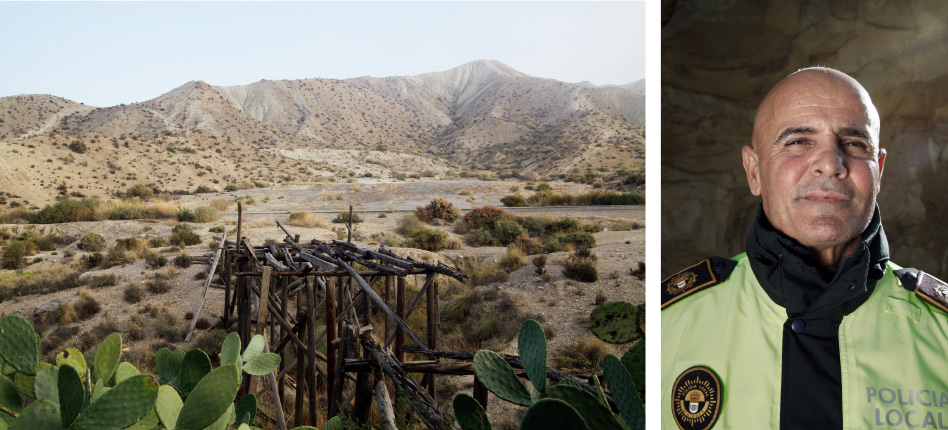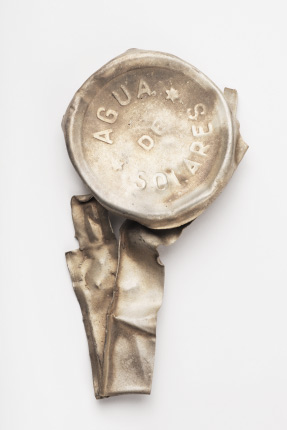My project “Yucca Valley” started out very simple: I discovered that Sergio Leone’s pioneering and stunning ‘spaghetti westerns’ were recorded not in Mexico or the USA, but mostly in a desert in the far south of Spain. I always considered the panoramic landscapes in ‘For a few Dollars more’ or “The Good, the Bad and the Ugly” to be archetypically American, so their European pedigree surprised me. Fascinated, I set out to discover more on this arid area that is Europe’s only real desert, spending ten months in some of the most forgotten areas of Spain. What I found was an important and charismatic part of (cinematic) history that was almost lost to time. As the movies were recorded in the 60′s and 70′s I noticed that it was not easy to find information – the Spaniards themselves erased most memories of that time, as as it is commonly associated with the rule of Franco. However, it turns out that at the heart of his dictatorial regime there was a booming western movie business that not only changed the cinematic identity of the world, but visual culture in general. When recording photos from the landscapes that Leone featured in his movies I took great care to always re-interpret the composition/landscape. I felt my work should feel awkwardly ‘familiar’ but never directly recognizable. Hence, in the photographs you will see my personal viewpoint; My re-analysis of these landscapes, in which I often use metaphors to further connect with the underlying subject matter.
For example, in the photo of the mountain with the white cloud behind it, I drew a connection with the famous Paramount logo. (A Pioneer of the western genre). Waiting for the cloud to position itself just right helped in making it look a lot bigger than it is, and also allowed me to create a connection with the pack of cigarettes and have a bit of ‘tongue in cheek’ interaction going on between them. However, this playful interaction serves a purpose, since this location was used multiple times for scenes in which Clint Eastwood descends on horseback from that particular hill. The pack of cigarettes was encountered a few miles east on a remote location in the mountains used exclusively for one particular scene from the Good, the Bad and the Ugly. It was lying below a stack of other rubbish that was identifiably from the movie set. Marlboro confirmed an estimate age of the design of the cigarette package that matched the recording dates (1966). It was one of the many stunning finds that I could verify, partially with the help of extras, actors, local guides and frames from the movie. Slowly my project became archaeology rather than art – I felt a growing desire to collect and archive as many artifacts as I could from these remote, barren locations. I found dummy bullet shell casings belonging to specific pistols used in certain scenes, exactly where they fell to the ground in the movies. I found a pen, broken in half, that was confirmed by a Spanish actor to be from Sergio Leone – he had the tendency to break pens when frustrated or angry. I found bottle caps from expensive Spanish mineral water and even two types of imported Italian mineral water – reserved exclusively for Sergio Leone and a few other members of his team. My desire to document the landscape and the people involved in the making of Leone’s movies was only matched by the wish to find as many (verifiable) cinematic remains as possible. Climate change is causing record rainfall in this once driest area of Europe, and even in the few years (2009-2012) that I was active I noticed that the landscapes not only turned greener and greener, but that wooden remains started to rot, iron objects were rusting away quickly. That combined with the severe aging of the majority of actors, extras and locals helping with logistics and construction (now mostly in their 80′s) meant that soon there would be no story to tell; No objects to find; No unique landscapes to admire. I started to see that at some point the rubbish and leftovers from the past had become history, and hence my finds were not so much curiosities but historical artefacts belonging to some of the greatest, most influential movies ever made. The act of photographing these objects was a further form of preservation of history which also reconnected me with my primary aim – to create a set of images layered with symbolic and metaphoric details that did justice to the depth and complexity of Leone’s movie scenes (often themselves referring to political, historical or cinematic moments).
As I personally find it objectionable to ‘piggyback’ on the fame of other great artists, I have (until now) not mentioned the connection with Sergio Leone or his movies, referring only to climate change and the Franco history, among other things, as my inspiration. However, it seems that without explaining more about the subject matter and my thought process the viewer cannot fully appreciate the importance of the objects, the landscapes and the people photographed. So, you have read it first on Landscape Stories!

